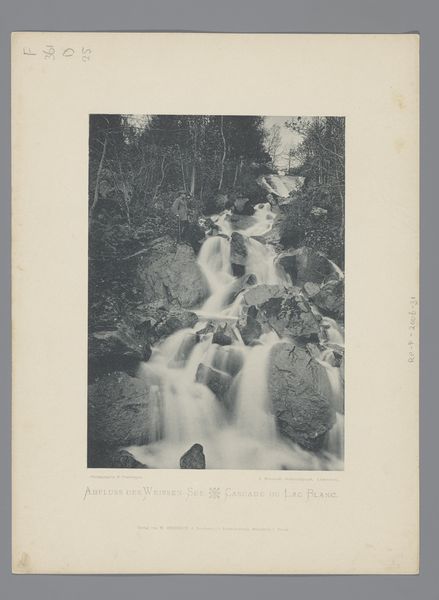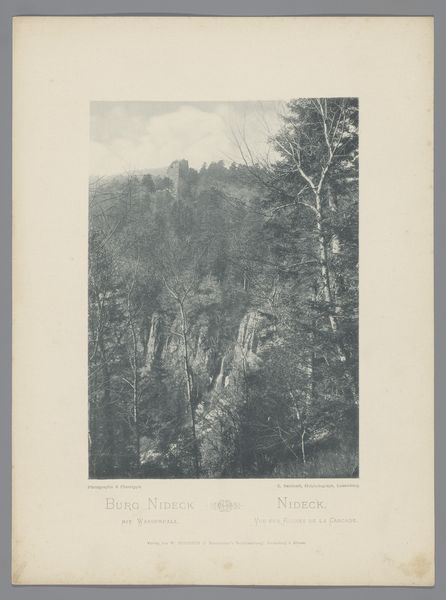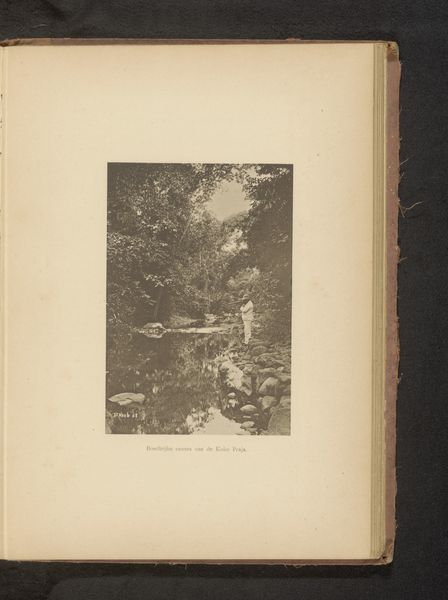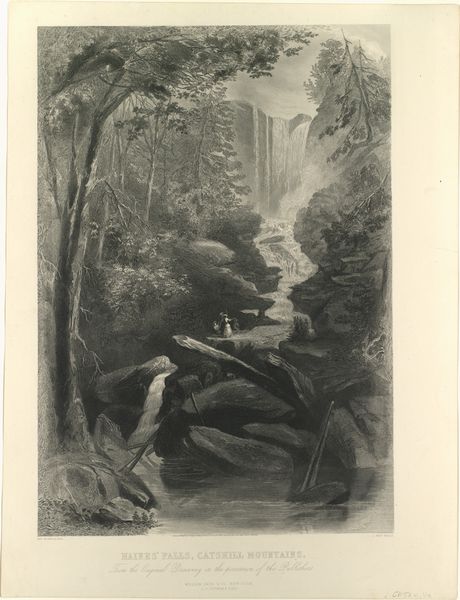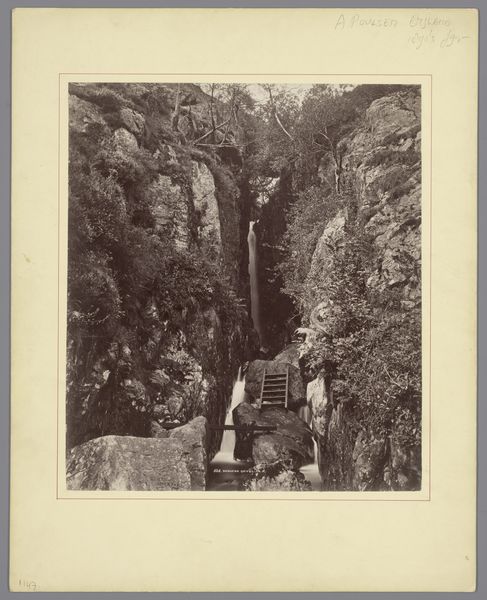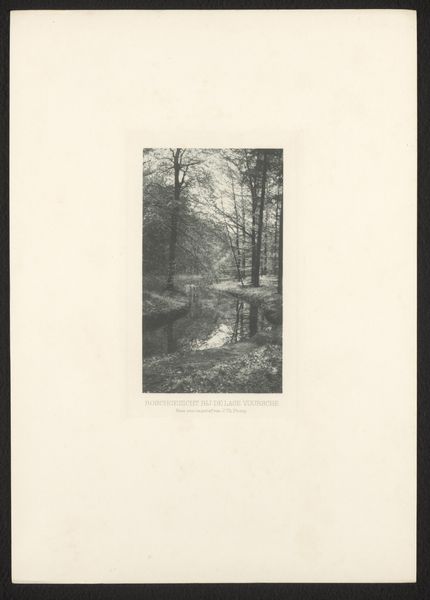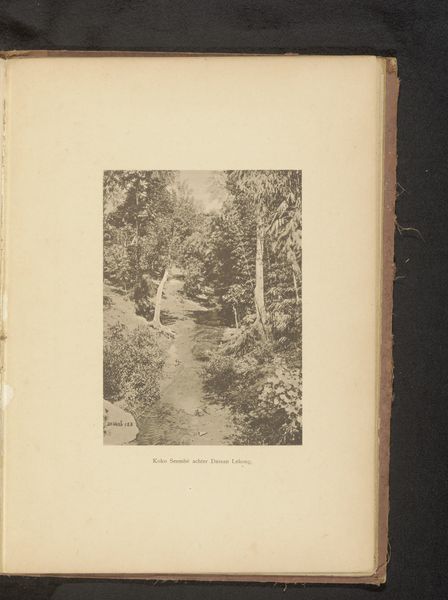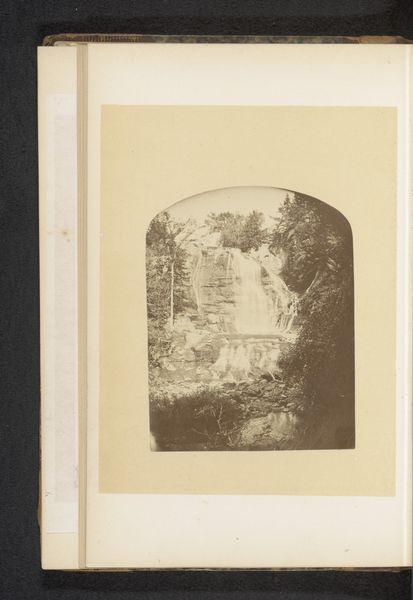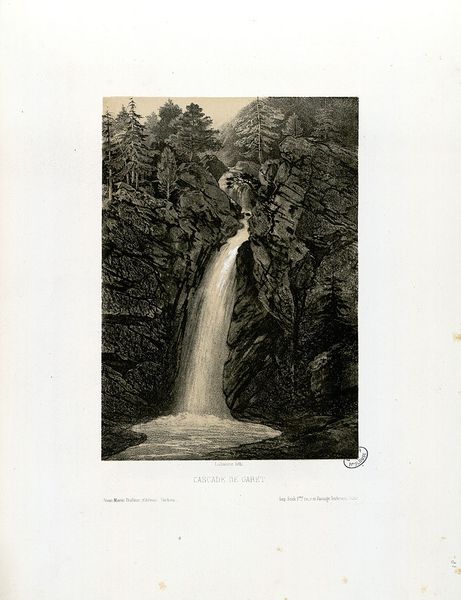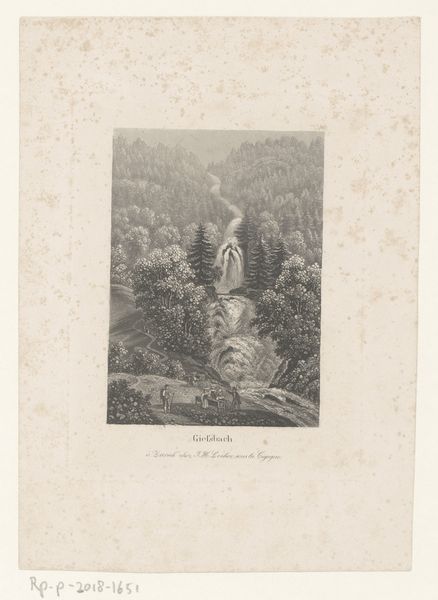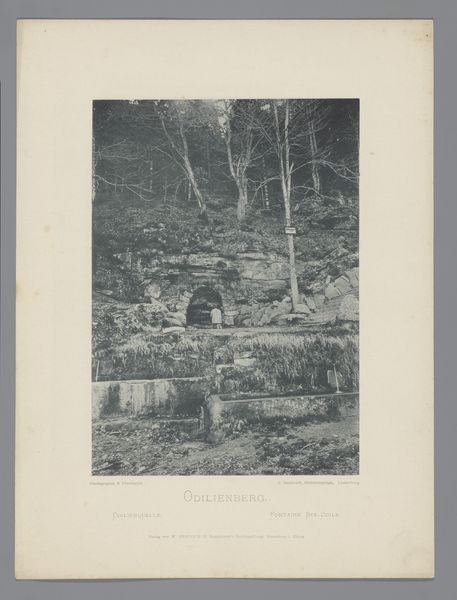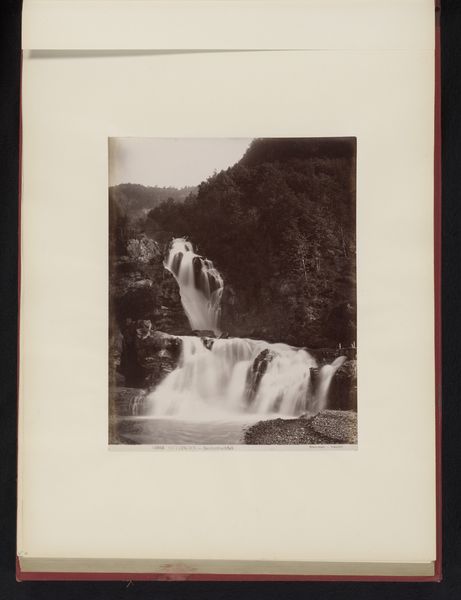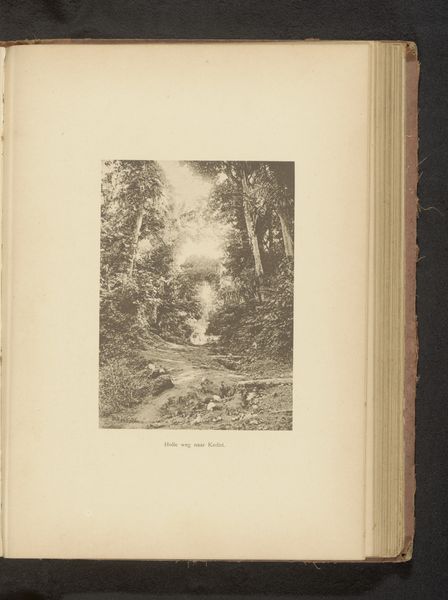
Dimensions: height 216 mm, width 153 mm
Copyright: Rijks Museum: Open Domain
Editor: So, this is Charles Bernhoeft’s "Waterval bij Seebach," a gelatin silver print from before 1894. The cascade is lovely, but there's a melancholic stillness to it, like a captured moment of a fleeting experience. What catches your eye when you look at this? Curator: Isn't it funny how a frozen waterfall can evoke so much flow? It reminds me of trying to hold onto a dream, just slivers and whispers remaining. Beyond that initial impression, though, I'm struck by how Bernhoeft uses light to almost sculpt the water, making it feel incredibly tactile. Does it draw you in that way? Editor: It does, actually. The contrast is quite intense. There’s something ethereal about the cascading water against the density of the dark trees. What does the framing achieve here? Curator: The dark frame feels like a deep breath, a prelude to the lightness of the cascade. In many ways, the image mirrors our internal world - where shadows dance with the most vibrant streams of consciousness. Do you think Bernhoeft saw his world in stark contrasts, and wanted to highlight that with this contrast technique? Editor: Perhaps. It also draws my eyes immediately to the bright fall. Curator: Exactly! By manipulating light and shadow, Bernhoeft directs our gaze. In this "Waterval bij Seebach," the landscape mirrors the journey from the tangible to the dreamlike. It's Bernhoeft whispering secrets. Editor: It's almost as though you're there. I appreciate your seeing this piece through the eyes of the artist's emotional perspective.
Comments
No comments
Be the first to comment and join the conversation on the ultimate creative platform.
